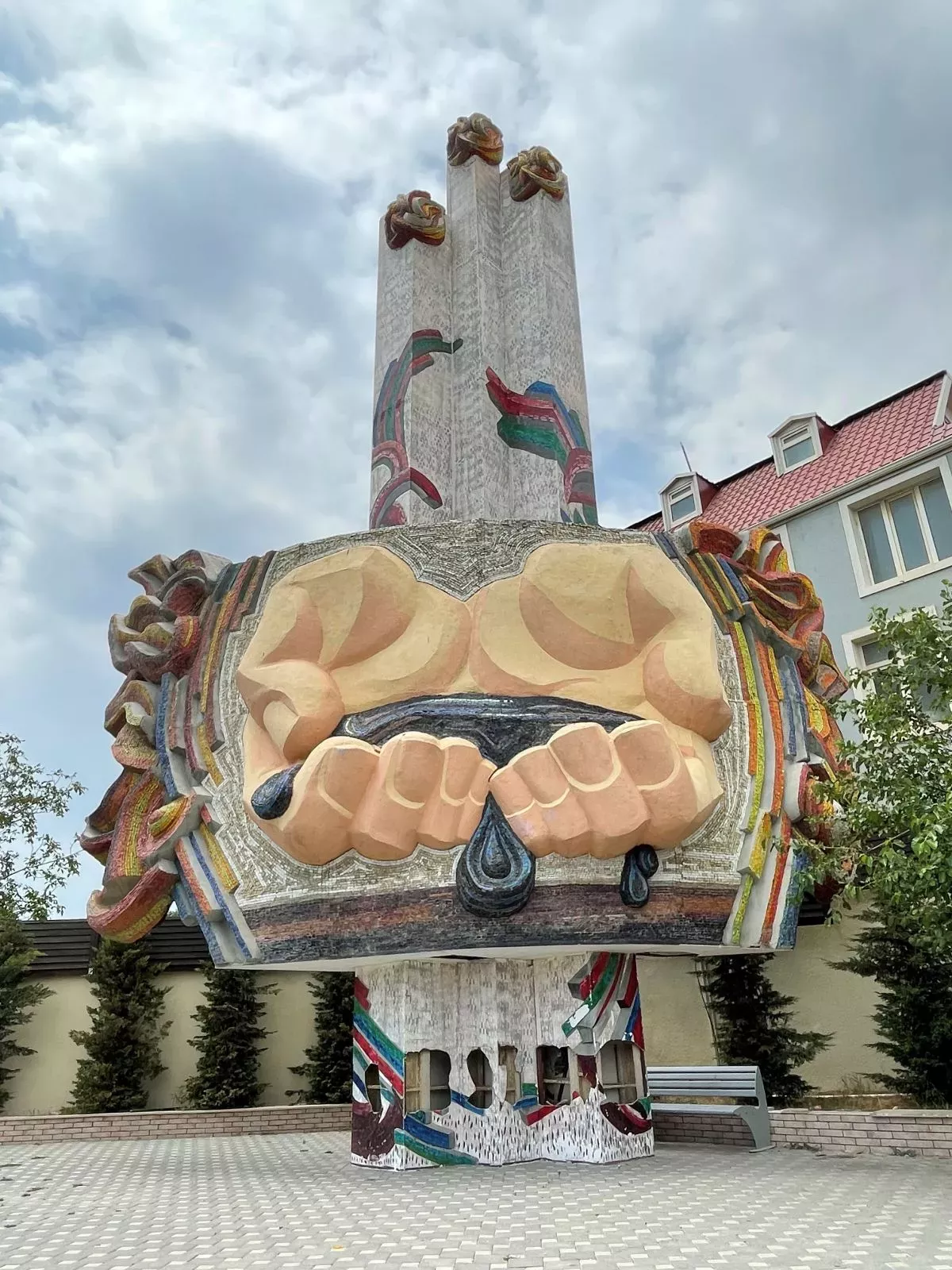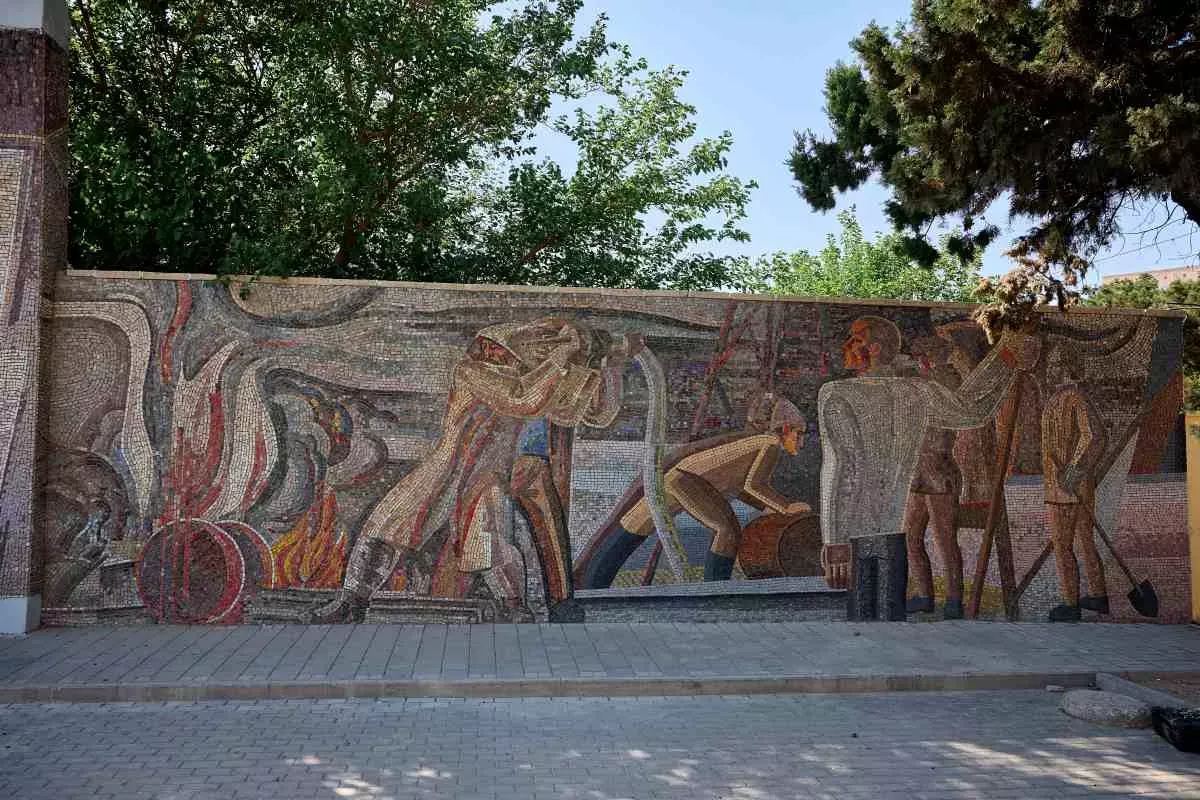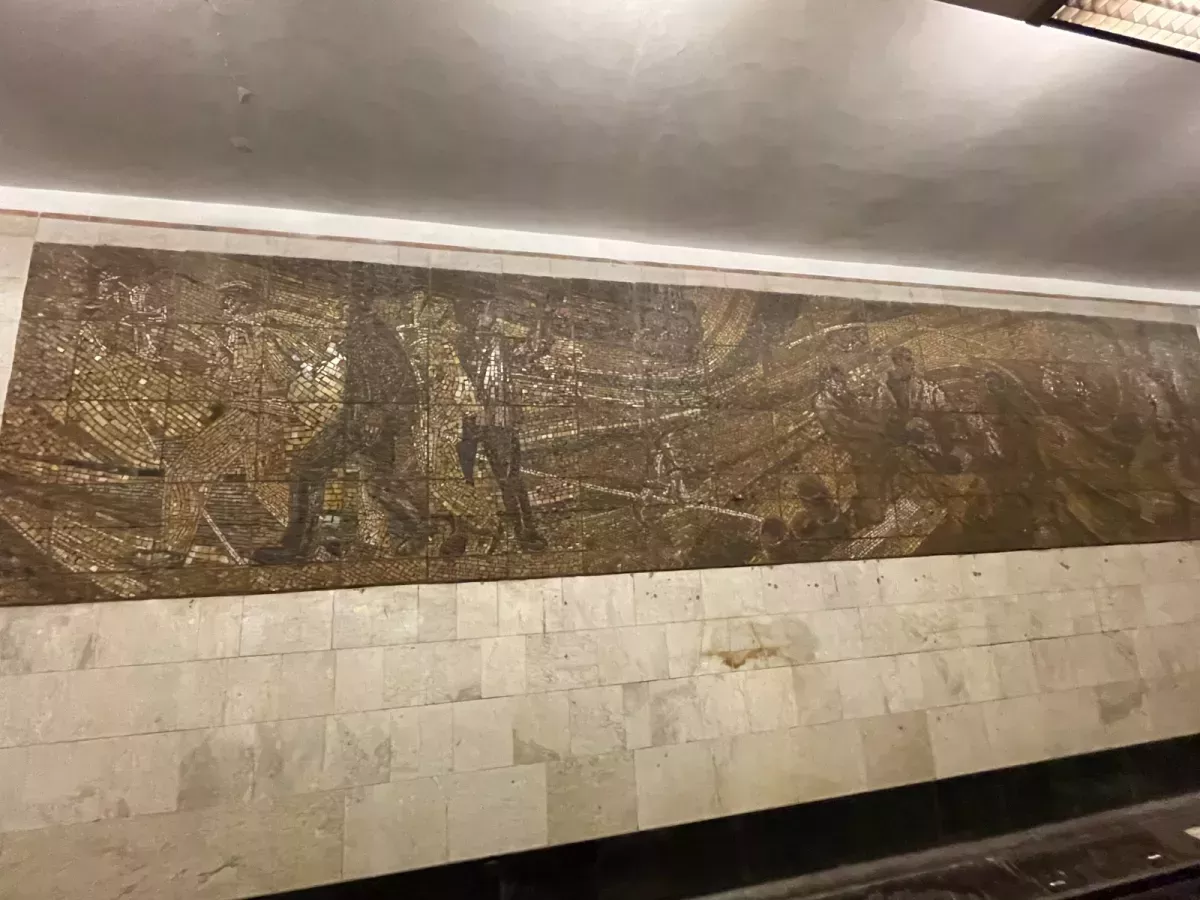From metro walls to city squares: The Baku oilmen immortalised in art A historical overview by Caliber.Az / Part II
Throughout Azerbaijan, one can find numerous mosaic panels dedicated to the oil era and the labour of oil workers. These images not only celebrated the profession but also helped shape the visual code of the country’s industrial heritage.
Obelisk “Worker’s hands”

One of the iconic monumental works dedicated to the oil theme is the “Worker’s Hands” Obelisk, located in the Sabail district of Baku. It rises amid greenery and residential buildings, while remaining clearly visible from the central thoroughfare.
Created in 1979 by artists Rashid Heydarzade, Siruz Mirzazada, Arif Alasgarov, and Elkhan Tahirov, the obelisk is distinguished by its concise yet expressive artistic language. Its structure consists of a tall white column divided into three protruding sections. At the centre of the composition are the hands of an oil worker, stretched out horizontally. From the pressed palms flows a drop of oil—a symbol of the wealth of the Absheron land. The restrained plasticity, monumental form, and powerful symbolism make this obelisk not just an ornament of the urban landscape, but an important monument of the industrial era.
Mosaic panel “The Heroic Past of Baku Oil Workers”

The history of Azerbaijan’s oil industry is, unfortunately, also linked to tragic episodes. These dramatic events are reflected in mosaic panels dedicated to the heroism and selflessness of the people. One such work is the mosaic in the Surakhani district titled “The Heroic Past of Baku Oil Workers,” created in 1977 by Mirza Agha Gafarov.
The mosaic conveys not only the drama but also the heroism of those who battled fire, risking their lives to save others. Using vivid colours and expressive details, the artist captured the atmosphere of the intense struggle against the elements. This work became a monument to the courage and resilience of oil workers, eternally preserving their fearless labour.
In 2025, the mosaic underwent careful restoration, during which the lost fragments were reconstructed under the guidance of artist Amirkhan Mammadvaliyev. The colors gained new depth and richness, infused with energy, and the surface shone with renewed beauty. Today, the panel delights the eye once again, reminding the residents of Baku of a time when art and industry went hand in hand, creating the unique character of an era.
The “Neftchilar” (Oilmen) station

In Baku, mosaics adorn not only building facades and public spaces but also metro stations, turning them into underground art galleries. The Baku Metro, opened in 1967, was conceived from the start not only as a transportation artery but also as a space filled with art.
Mosaics became an integral part of the architectural identity of many stations. Among them, “Nizami Ganjavi,” “20 January,” “Ganjlik,” “Nariman Narimanov,” and, of course, “Neftchilar” stand out — one of the most striking stations, opened on November 6, 1972.
Six monumental panels created by artists Arif Aghamalov and Mirza Agha Gafarov are located here. Aghamalov’s works symbolically adorn the station, whose name translates as “Oil Workers.” They immortalise the labour of the people who built Azerbaijan’s industrial might, conveying the atmosphere of an era when art and ideology were inseparably linked.
Each panel is a carefully designed and detailed scene from the lives of oil workers and the working class. Their imagery and scale transform the “Neftchilar” station from a mere transport hub into a unique art hall, preserving the memory of the people and their labour.
These mosaics are more than elements of the urban environment. They are witnesses of an era, speaking through colour, form, and symbol of glory, labour, and dreams. Thanks to the talent of the artists and the mastery of the craftsmen, every fragment is imbued with the meaning and energy of its time.
The expressiveness and decorative power of the mosaics make them an essential part of Baku’s visual code. They beautify the cityscape, enliven the surroundings, and create an emotional bridge between the past and the present.
Vahid Shukurov, exclusively for Caliber.Az








